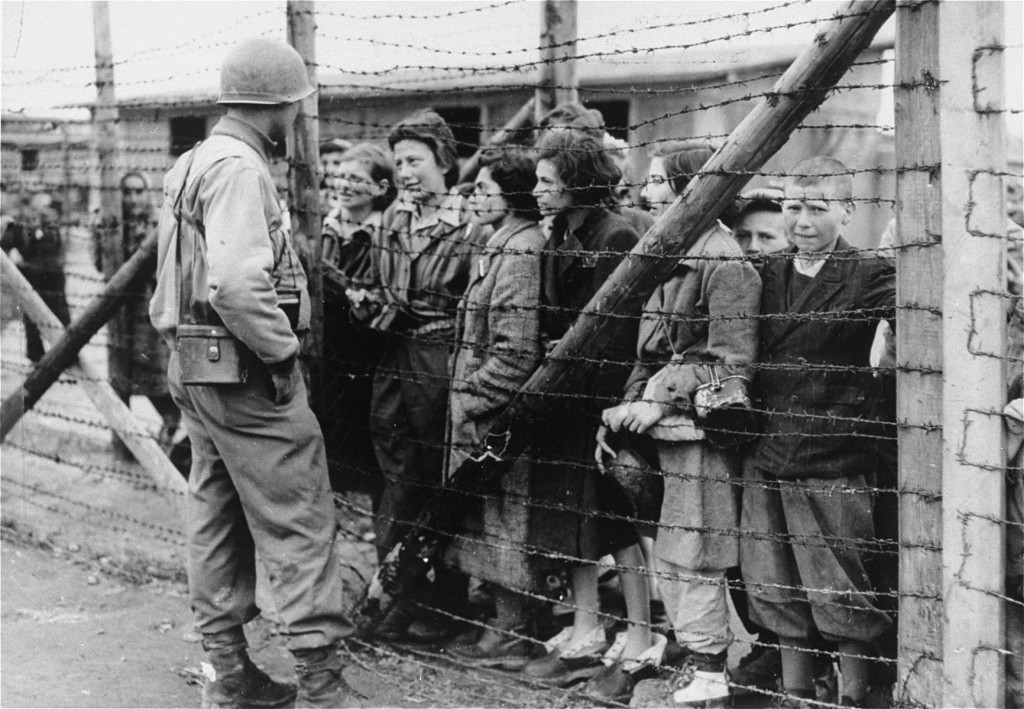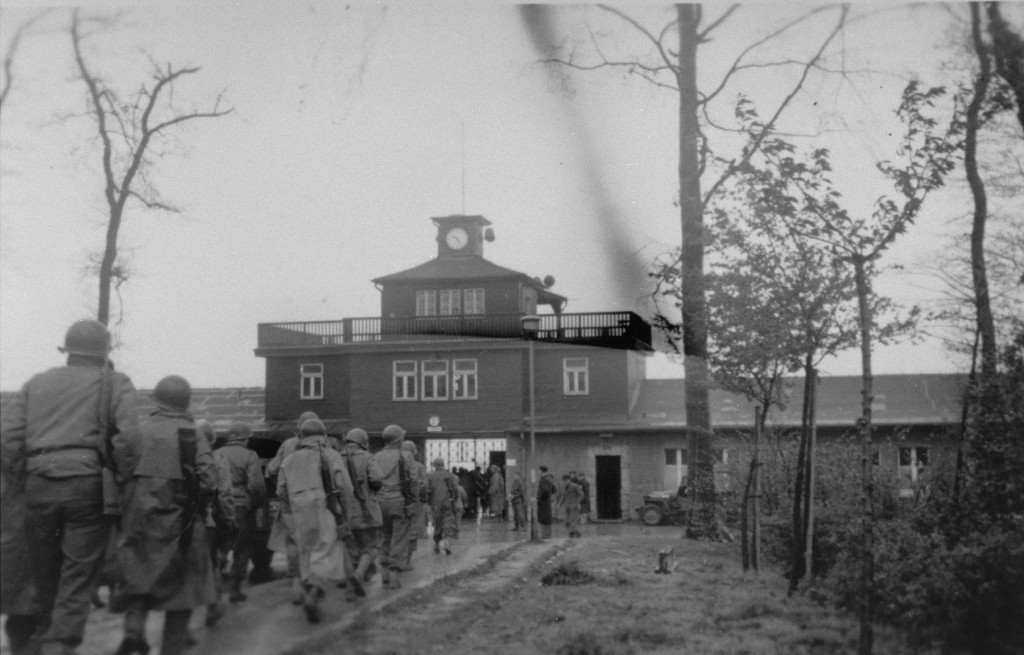
Liberation: An Overview
As Allied and Soviet troops moved across Europe against Nazi Germany, they encountered concentration camps, mass graves, and other sites of Nazi crimes. Though liberation of Nazi camps was not a primary objective of the Allied military campaign, US, British, Canadian, and Soviet troops freed prisoners from their SS guards, provided aid to survivors, and collected evidence. 2025 marked the 80th anniversary of the liberation of concentration camps and the end of Nazi tyranny in Europe.
The things I saw beggar description.... The visual evidence and the verbal testimony of starvation, cruelty and bestiality were... overpowering....I made the visit deliberately in order to be in position to give firsthand evidence of these things if ever, in the future, there develops a tendency to charge these allegations merely to "propaganda."
—General Dwight D. Eisenhower, in a letter to Chief of Staff George C. Marshall, April 15, 1945
On June 6, 1944 (known as D-Day), the western Allies launched the single largest amphibious invasion force in world history, landing almost 150,000 soldiers under the command of US General Dwight D. Eisenhower on the beaches of Normandy, France. By the end of the month, more than 850,000 American, British, and Canadian troops had come ashore to embark upon what Eisenhower called the “Great Crusade,” the “destruction of the German war machine, the elimination of Nazi tyranny over the oppressed peoples of Europe, and security for ourselves in a free world.”
On June 22, 1944, Soviet forces opened a major offensive that crushed the German forces defending the center of the eastern front in western Belorussia, sweeping the line of the front into central Poland by early August.

As Allied and Soviet troops moved across Europe in a series of offensives against Nazi Germany, they encountered concentration camps, mass graves, and numerous other sites of Nazi crimes. Soviet forces were the first to overrun a major Nazi concentration camp, Lublin/Majdanek, near Lublin, Poland, in July 1944. On January 27, 1945, Soviet troops liberated the Auschwitz concentration camp complex, where they discovered about seven thousand prisoners, including young children, who had not been evacuated by the SS. American soldiers, too, witnessed evidence of the Holocaust and Nazi atrocities as they marched into the interior of Germany, liberating the major concentration camps such as Buchenwald, Dachau, and Mauthausen as well as hundreds of subcamps, including Ohrdruf (a subcamp of Buchenwald). Though the liberation of Nazi camps was not a primary objective of the Allied military campaign, US, British, Canadian, and Soviet troops freed prisoners from their SS guards, provided them with food and badly needed medical support, and collected evidence for war crimes trials.

Liberation Dates
Listed here are dates of liberation of some of the camps:
July 23–24, 1944: Soviet forces liberated Lublin-Majdanek
January 27, 1945: Soviet forces liberated Auschwitz-Birkenau
February 13, 1945: Soviet forces liberated Gross-Rosen
April 4, 1945: US forces liberated Ohrdruf, a subcamp of Buchenwald
April 11, 1945: US forces liberated Buchenwald and Dora-Mittelbau
April 12, 1945: Canadian forces liberated Westerbork
April 15, 1945: British forces liberated Bergen-Belsen
April 22, 1945: Units of the First and 47th Polish Armies, operating under overall Soviet command, liberated Sachsenhausen
April 23, 1945: US forces liberated Flossenbürg
April 29, 1945: Soviet forces liberated Ravensbrück; US forces liberated Dachau
May 4, 1945: British forces liberated Neuengamme
May 5, 1945: US forces liberated Mauthausen
On May 8, 1945, Nazi Germany’s unconditional surrender became official.
Critical Thinking Questions
What challenges did the Allied forces face when they encountered the camps?

